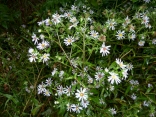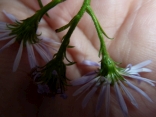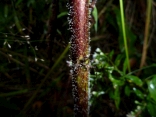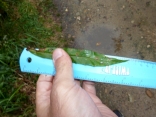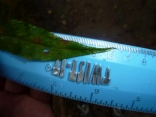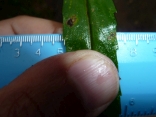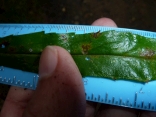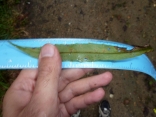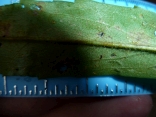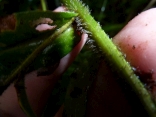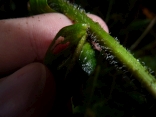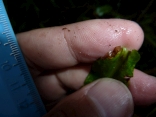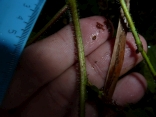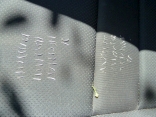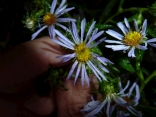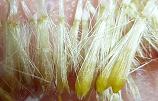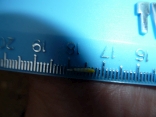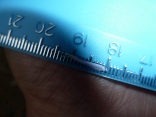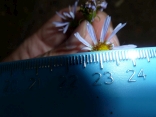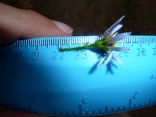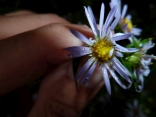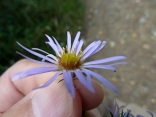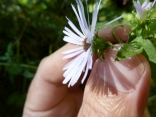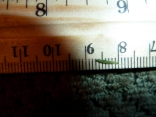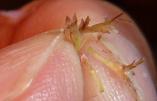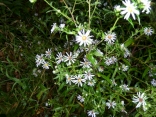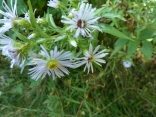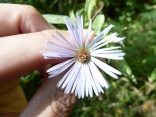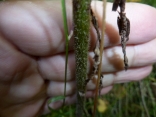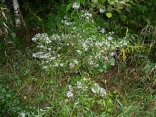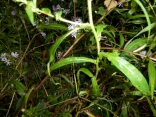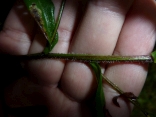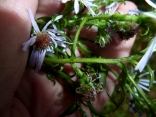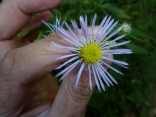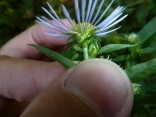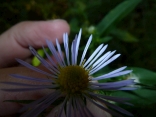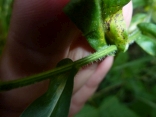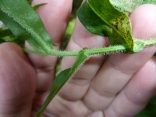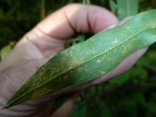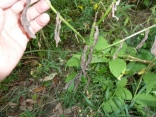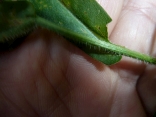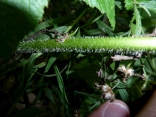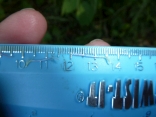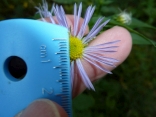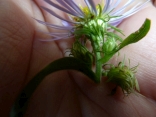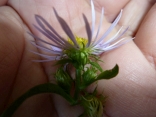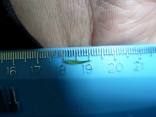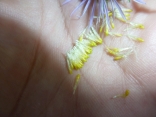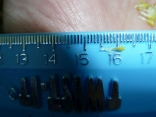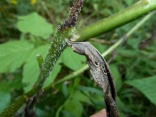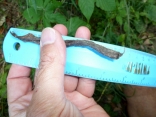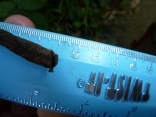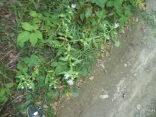I narrowed my search down to three plants:
- New York Aster (Symphyotrichum novi-belgii)
- White Panicle Aster (Eastern Lined Aster) (Symphyotrichum lanceolatum var. simplex)
- Purplestem Aster (Swamp Aster, Bristly Aster (Symphyotrichum puniceum)
The White Panicle Aster can have white, blue or lavender flowers and the simplex variation that does grow in New Hampshire has leaves up to 3.5 cm wide. If the leaves would be considered not auriculate-clasping, this plant would be a possible match. However, White Panicle Aster flower bracts range from 3 to 6 mm, but this plant has flower bracts that are 7 mm. On the White Stem Panicle, the bracts are imbricate (they overlap like shingles), but in this plant, very few of the bracts overlap.
The rays of the on the White Stem Panicle flower grow 4.5 to 12 mm, but this plant has rays that grow over 13 mm. The stem on White Panicle Aster grows up to 1.5 meters (although some books say that the stem can be up to 8 feet long), but the stem on this plant is 1.7 meters. The stem on White Panicle Aster is “pubescent in lines above” (whatever the @*#%! that means! -- I will guess that it means that there are single lines of hairs on the upper part of the stem only and then the rest of the stem ... it’s anyone’s guess).
Purplestem Aster seemed the better match other than two issues:
- The leaves do not appear to me to be auriculate-clasping (earlike lobes at the base of the leaf encircling the stem). The leaves appear to be slightly decurrent (extending downward along the stem) and only slightly clasping. Because the leaf extends downward along the stem, it makes it appear to more strongly clasp the stem. Here is a picture from the USDA Site of Purplestem Aster. If you look at a picture of the leaf not on the stem from the University of Wisconsin Herbarium, you can see that the leaf does not have significant lobes to strongly clasp the stem.
- The other issue is that Purplestem Aster is supposed to has 30 to 60 flower rays per flower. Many of the flowers I saw had in the mid 20’s for the number of rays. I think some may be falling off, though. I'll go back and look at more flowers tomorrow before I can be sure if these flowers usually have 30 to 60 flower rays.

